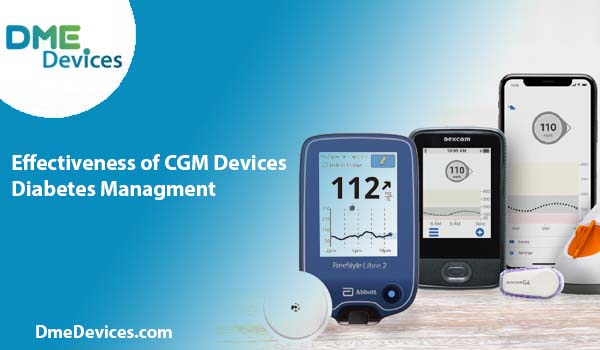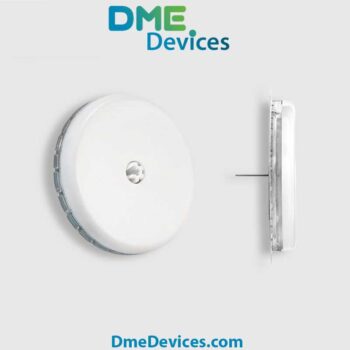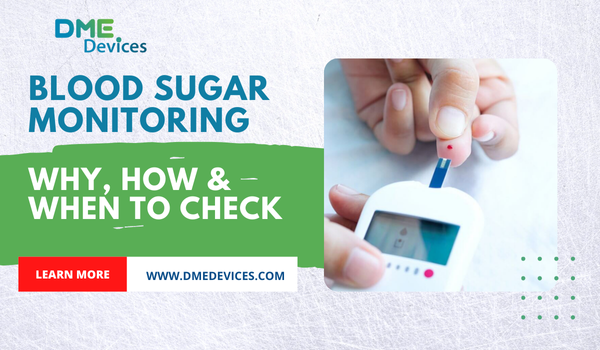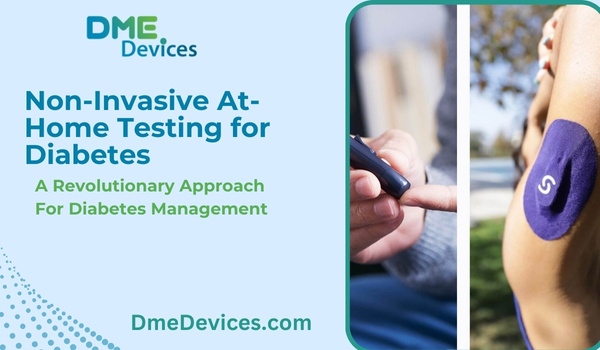Introduction
Diabetes is a chronic condition that affects millions of people worldwide. According to the International Diabetes Federation, in 2021, around 537 million adults aged 20-79 were living with diabetes globally, and this number is projected to rise to 783 million by 2045. Proper management of blood glucose levels is crucial to prevent or delay the onset of complications associated with diabetes, such as nerve damage, kidney disease, and cardiovascular problems. Continuous glucose monitoring (CGM) systems have emerged as a game-changer in diabetes management, providing real-time glucose readings and enabling better control over blood sugar levels. As a professor in the field of diabetes, I have witnessed firsthand the transformative impact of CGM systems on the lives of individuals living with diabetes.
How CGM Systems Work
CGM systems consist of a small sensor inserted under the skin, typically on the abdomen or arm, which measures the glucose levels in the interstitial fluid (the fluid surrounding the cells). The sensor is connected to a transmitter that wirelessly sends the glucose data to a receiver or a compatible smart device, such as a smartphone or insulin pump.
Unlike traditional finger-stick blood glucose monitoring, CGM systems provide continuous glucose readings every 5 minutes, allowing for a comprehensive understanding of glucose patterns and trends. This real-time data enables users to make more informed decisions about their diabetes management, including adjusting insulin doses, modifying dietary intake, or increasing physical activity.
Advantages of CGM Systems
CGM systems offer several advantages over traditional finger-stick blood glucose monitoring:
- Continuous monitoring: CGM systems provide glucose readings every 5 minutes, allowing for a comprehensive understanding of glucose patterns and trends.
- Alerts and alarms: Users can set customizable alerts for high or low glucose levels, helping prevent potentially dangerous situations.
- Improved glycemic control: Studies have shown that CGM use can lead to better glycemic control, as measured by lower HbA1c levels (a measure of average blood sugar over 2-3 months).
- Reduced risk of hypoglycemia: CGM systems can alert users to impending low blood sugar levels, helping them take preventive measures.
- Trend analysis: CGM data can be analyzed to identify patterns and trends, enabling users to make more informed decisions about their diabetes management.
- Improved quality of life: CGM systems can reduce the burden of frequent finger-stick testing and provide a sense of security and peace of mind for individuals living with diabetes.
Clinical Evidence of CGM Effectiveness
Numerous clinical studies have demonstrated the effectiveness of CGM systems in improving diabetes management. The DIAMOND and JDRF CGM studies, among others, have shown that CGM use can lead to significant reductions in HbA1c levels, improved time spent in the target glucose range, and decreased rates of hypoglycemia.
Impact on Glycemic Control
A meta-analysis published in the Journal of the American Medical Association (JAMA) in 2022 reviewed data from 33 randomized controlled trials involving over 7,000 participants with type 1 or type 2 diabetes. The study found that CGM use was associated with a significant reduction in HbA1c levels, with an average decrease of 0.4% to 0.6% compared to self-monitoring of blood glucose (SMBG).
This reduction in HbA1c levels is clinically significant, as every 1% decrease in HbA1c can lower the risk of diabetes-related complications, such as nerve damage, kidney disease, and eye problems, by up to 40%.
Reduction in Hypoglycemia
The same meta-analysis also found that CGM use was associated with a lower risk of hypoglycemia (low blood sugar) compared to SMBG. Participants using CGM had a 37% lower risk of severe hypoglycemia and a 26% lower risk of nocturnal hypoglycemia.
Hypoglycemia can be a life-threatening condition, especially in individuals with type 1 diabetes or those taking insulin or certain oral medications. By providing real-time glucose data and alerts, CGM systems can help users anticipate and prevent hypoglycemic events, reducing the risk of complications and improving overall safety.
Improved Time in Target Range
In addition to lowering HbA1c levels and reducing hypoglycemia, CGM systems have been shown to increase the time spent in the target glucose range. A study published in Diabetes Care in 2020 found that participants using CGM spent significantly more time in the target range (70-180 mg/dL) compared to those using SMBG.
Maintaining glucose levels within the target range is crucial for preventing long-term complications and ensuring optimal health. By providing continuous glucose data, CGM systems enable users to make adjustments to their diabetes management regimen as needed, helping them achieve better glycemic control and stay within the desired range.
Popular CGM Devices and Their Features
Several companies have developed advanced CGM systems that have gained widespread adoption among individuals with diabetes. Here are some of the popular CGM devices and their key features:
Freestyle Libre 3
The Freestyle Libre 3 is the latest CGM system from Abbott Laboratories. It offers the following features:
- Smallest and thinnest sensor design, measuring just 2mm thick.
- Factory-calibrated, eliminating the need for finger-stick calibration.
- Bluetooth connectivity for seamless data sharing with compatible devices.
- Glucose readings every minute, providing a comprehensive picture of glucose trends.
- Customizable high and low glucose alarms for increased safety.
- Sensor wear time of up to 14 days, reducing the burden of frequent sensor replacements.
Dexcom G7
The Dexcom G7 is the latest offering from Dexcom, a leading manufacturer of CGM systems. It boasts the following features:
- Smaller and slimmer sensor design compared to previous Dexcom models.
- Improved sensor accuracy, with a mean absolute relative difference (MARD) of 8.5%.
- Customizable high and low glucose alerts with urgent low soon alert.
- Seamless integration with compatible smart devices and wearables.
- Sensor wear time of up to 10 days, providing extended monitoring without interruption.
- Compatibility with Dexcom’s suite of diabetes management apps and software.
Both the Freestyle Libre 3 and Dexcom G7 have received regulatory approvals from various bodies, including the U.S. Food and Drug Administration (FDA) and the European Union (CE Mark), attesting to their safety and efficacy.
Integration with Diabetes Management Technologies
CGM systems are often integrated with other diabetes management technologies, such as insulin pumps and smart insulin pens, creating a comprehensive system for monitoring and managing diabetes.
Insulin Pump Integration
Many CGM systems can be integrated with insulin pumps, creating a “closed-loop” system that automatically adjusts insulin delivery based on the CGM readings. These systems, often referred to as “artificial pancreas” or “automated insulin delivery” systems, can significantly improve glycemic control and reduce the burden of diabetes management.
The Medtronic MiniMed 670G and the Tandem Control-IQ systems are examples of commercially available hybrid closed-loop systems that combine CGM technology with insulin pumps. These systems use advanced algorithms to automatically adjust insulin delivery based on CGM data, helping to keep glucose levels within the target range.
In a study published in the New England Journal of Medicine in 2022, the Medtronic MiniMed 670G system was found to significantly improve glycemic control and reduce the time spent in hypoglycemia compared to traditional insulin pump therapy. Participants using the closed-loop system had an average HbA1c reduction of 0.6% and spent an additional 2.6 hours per day in the target glucose range.
Smart Insulin Pen Integration
CGM systems can also be integrated with smart insulin pens, which are designed to track and record insulin doses, allowing for better data analysis and trend identification. By combining CGM data with insulin dose information, users and healthcare providers can gain a more comprehensive understanding of the relationship between insulin, dietary intake, and physical activity, enabling more personalized and effective diabetes management.
The Companion Medical InPen and the Novo Nordisk NovoPen 6 are examples of smart insulin pens that can integrate with CGM systems. In a study published in Diabetes Care in 2021, the use of the Companion Medical InPen in conjunction with a CGM system resulted in a significant improvement in glycemic control, with an average HbA1c reduction of 1.1%.
Cost and Reimbursement Considerations
While CGM systems have proven to be highly effective in improving diabetes management, the cost of these devices remains a significant barrier for many individuals. The initial cost of a CGM system, including the receiver, transmitter, and sensors, can range from $800 to $1,200 in the United States. Additionally, ongoing costs for sensor replacements can range from $60 to $120 per month.
However, it’s important to note that many insurance companies and government programs are recognizing the long-term benefits of CGM systems and are providing coverage or reimbursement. In the United States, Medicare and most private insurance plans cover CGM systems for individuals with type 1 diabetes or those with type 2 diabetes who meet certain criteria, such as being on intensive insulin therapy.
Furthermore, several studies have demonstrated the cost-effectiveness of CGM systems in reducing healthcare expenditures associated with diabetes complications. A study published in Diabetes Care in 2018 found that the use of CGM systems in individuals with type 1 diabetes resulted in a cost savings of $6,834 per patient over a three-year period, primarily due to reduced hospitalizations and fewer diabetes-related complications.
Potential Future Developments
As technology continues to evolve, we can expect further advancements in CGM systems and their integration with other diabetes management technologies.
Implantable CGM Systems
Currently, CGM sensors are inserted under the skin and need to be replaced every 7-14 days, depending on the system. However, researchers are working on developing implantable CGM systems that can provide continuous glucose monitoring for an extended period, potentially up to several months or years.
These implantable systems could significantly reduce the burden of frequent sensor insertions and replacements, improving user convenience and adherence. Additionally, they may offer improved accuracy and reliability, as the sensor would be less susceptible to external factors that can affect subcutaneous sensors.
In a study published in Diabetes Technology & Therapeutics in 2020, researchers at the University of California, Los Angeles (UCLA) developed an implantable CGM system that demonstrated accurate glucose monitoring for up to six months in preclinical animal models.
Artificial Intelligence and Machine Learning
The integration of artificial intelligence (AI) and machine learning algorithms into CGM systems could further enhance their capabilities. AI algorithms could analyze CGM data, insulin dosing information, dietary intake, and physical activity to provide personalized recommendations and predictions, empowering individuals with diabetes to make more informed decisions about their management.
Moreover, AI-powered CGM systems could potentially identify patterns and trends that may be difficult for humans to detect, leading to more precise and tailored treatment plans.
In a study published in Nature Medicine in 2022, researchers at the University of Cambridge developed an AI-based system that could predict future glucose levels up to 60 minutes in advance with an accuracy of 84% using CGM data. This technology could potentially be integrated into future CGM systems to provide advanced warning of impending hypoglycemic or hyperglycemic events.
Conclusion
Continuous glucose monitoring systems have proven to be a highly effective tool for managing diabetes. By providing real-time glucose data and alerts, CGM systems enable better glycemic control, reduce the risk of hypoglycemia, and ultimately improve overall diabetes management. While there are some considerations and limitations, the clinical evidence overwhelmingly supports the use of CGM systems for individuals with diabetes, particularly those with poor glycemic control or a history of severe hypoglycemia.
As technology continues to advance, we can expect further improvements and integration of CGM systems with other diabetes management technologies, such as insulin pumps, smart insulin pens, and AI-powered decision support systems. These developments will further enhance the capabilities of CGM systems, making diabetes management more seamless, personalized, and effective.
For individuals living with diabetes, the adoption of CGM systems can be a game-changer, empowering them to take control of their condition and potentially reducing the risk of long-term complications. By working closely with their healthcare team and utilizing the wealth of data provided by CGM systems, individuals with diabetes can achieve better glycemic control, improve their quality of life, and live healthier, more fulfilling lives.













Write a comment
Your email address will not be published. All fields are required